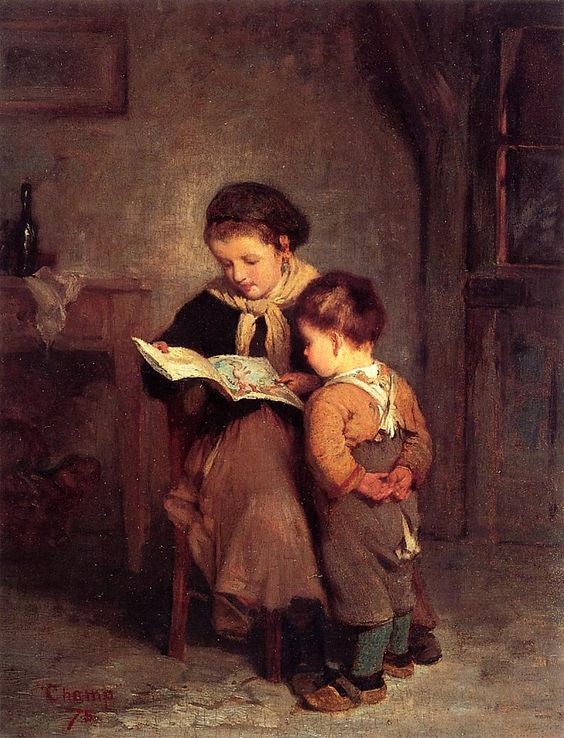Teacher question:
Some of my ELA teachers have been talking about dyslexia fonts lately. Is there any merit to this?
Shanahan response:
This question takes me back to graduate school. I was fascinated with print and its impact on reading.
That led me to study the work of a psychologist named Miles Tinker. He published scads of research and reviews of research on the impacts of print on reading and learning to read and on print itself (his 1963 book, Legibility of Print, is still a standard work).
Tinker made me a skeptic concerning the supposed benefits of print design alterations, eye movement training, and the like. He provided several summaries of each decade of research on these issues—always with the same conclusions—most print features made little difference in reading or ease of reading, and none facilitated learning to read.
That isn’t to say that he didn’t identify any print features that mattered—it is just that much of what he found out has become standard practice. Tinker helped standardize line lengths, identified type sizes that were too small to accommodate successful reading, and so on. We now live in a digital age, so many of those earlier studies are being replicated with regard to reading on the Internet or designing effective PowerPoint slides.
The idea that those with dyslexia might benefit from a special type font suggests that dyslexia is mainly a visual problem—an idea that has largely been rejected in the scientific community. The notion is that some fonts would be easier to read and would be particularly preferred by readers having trouble getting the print to stand still.
My Tinkerian response: “Oh, here we go again.”
Nevertheless, I conducted a quick search of the literature and here is what I found:
Over the past decade or so, three new fonts have appeared (Open Dyslexia, Dyslexie, and Read Regular), all claiming—without any empirical evidence—to somehow aid dyslexic readers.
Since then there have been 8 studies into the value of these fonts.
Most of the studies found no improvement in reading rate, accuracy, or eye fixations (Duranovic, et al., 2018; Kuster, et al., 2018; Rello & Baeza-Yates, 2013; Wery & Diliberto, 2017). The studies even found that dyslexics—children and adults—preferred reading standard fonts to the special ones (Harley, et al., 2016; Kuster, et al., 2018; Wery & Diliberto, 2017).
Only one study reported a benefit of any kind—the dyslexic students in this study read faster (Marinus, et al., 2016). This benefit apparently came, not from the font design, but from the spacing within and between words. The researchers increased the spacings in the standard fonts and the same effect was seen. Masulli (2018) likewise found that larger spacings improved the reading speed of dyslexics—but that effect was apparent with non-dyslexic readers, as well.
Reading faster is a good thing, of course, as long as reading comprehension is maintained. Unfortunately, these studies didn’t look at that.
If you think I’m being overly skeptical, then consider the results of one final study (French, et al., 2013). French and colleagues found that the harder to read fonts engendered deeper processing of the texts and improved learning from texts for the dyslexics. Helping dyslexics to make their processing quicker and shallower is a reasonable thing to do if your goal is faster completion of reading tasks. However, if the goal is to increase learning from text, then these new font technologies are a really bad idea.
Oh, and by the way, although some tout these new fonts for teaching purposes—there is no font that has ever been found to make learning to read any easier or more effective.
I know the media loves these kinds of “innovations.” They are sexy and fun to write about. But a century of research has shown that there are no lenses, eye movement trainings, fonts, special printing techniques, alphabets, or musical supports that improve reading or learning to read.
If you to increase reading abilities—of dyslexic or non-dyslexic readers—there is only one route that consistently delivers: You have to do the hard work of teaching students to read!
Please tell your ELA teacher: Fuggedaboutit!
References
Duranovic, M., Senka, S., & Babic-Gavric, B. (2018). Influence of increased spacing and font type on the reading ability of dyslexic children. Annals of Dyslexia, 68: 218-228.
French, M. M. J., Blood, A., Bright, N. D., Futak, D., et al. (2013). Changing fonts in education: How the benefits vary with ability and dyslexia. Journal of Educational Research, 106(4) 301-304.
Harley, L., Kline, K., Bell, C., Baranak, A., et al., (2015). Designing usable voting systems for voters with hidden barriers: A pilot study. International Journal of Human-Computer Interactions, 32: 103-118.
Kuster, S. M., van Weerdenburg, M., Gompel, M., & Bosman, A. M. T. (2018). Dyslexie font does not benefit reading in children with or without dyslexia. Annals of Dyslexia, 68, 25-42.
Marinus, E., Mostard, M., Segers, E.., Schubert, T. M., Madelaine, A., & Wheldall, K. (2016). A special font for people with dyslexia: Does it work and, if so, why? Dyslexia, 22: 233-244.
Masulli, F., Galluccio, M., Gerard, C., Peyre, H., et al., (2018). Effect of different fonts sizes and spaces between words on eye movement performance: An eye tracker study in dyslexic and non-dyslexic children. Vision Research, 153, 24-29.
Rello, L., & Baeza-Yates, R. (2013). Good fonts for dyslexia. Assets. https://dl.acm.org/citation.cfm?id=2513447
Wery, J. J., & Diliberto, J. A. (2017). The effect of a specialized dyslexia font, OpenDyslexic,on reading rate and accuracy. Annals of Dyslexia, 67, 114-127.







Comments
See what others have to say about this topic.